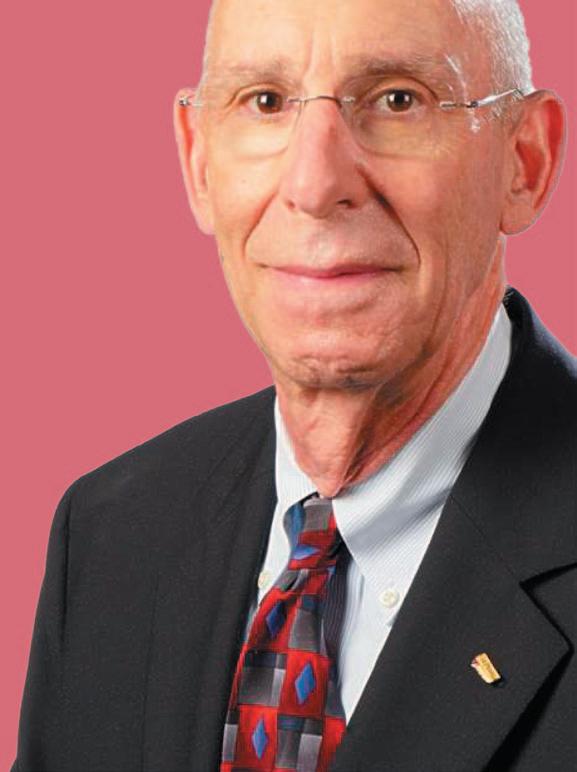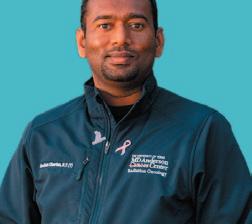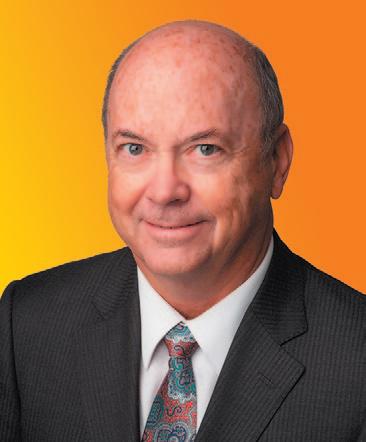
3 minute read
Do Unto Others
For Toby Simon, MD, the Presbyterian Cancer Care MD Anderson Cancer Network team who cared for him during his recent treatment for prostate cancer provided “the best possible care.” To show his appreciation, Dr. Simon has recognized the eight-person team with a Guardian Angel donation in their honor.

Advertisement
MD ANDERSON CANCER NETWORK GUARDIAN ANGEL RECIPIENTS




Dr. Amit Garg, MD* Jayme Runyan, RN Virginia Bernal, RTT Roshan Cherian, RTT*
Brandon Held, RTT Robert Hoppman, RTT Janis Roybal, RTT AshLeigh Smith, RTT



“Each member of this team understands what our patients are going through and we have a genuine desire to put them at ease during what is no doubt a lifechanging event. We truly believe we can make a positive difference in their lives.” – Roshan Cherian
*Dr. Garg is a two-time Guardian Angel recipient and Roshan Cherian has received the award three times.
Receiving a prostate cancer diagnosis is a frightening experience that can cause anxiety not only about the outcome but also about the treatment procedure itself. Research shows that for men with localized prostate cancer, external-beam radiation therapy is a highly effective treatment.
“A typical radiation therapy treatment course can last anywhere from one week to two months, so seeing a patient progress through their treatment and being with them through highs and lows means you can’t help but form a bond,” says Roshan Cherian, one of the radiation therapists who cared for Dr. Simon. “The most enjoyable aspect of my work is getting to know the patient and sharing experiences and stories about our lives.”
With locations at the Presbyterian Rust Medical Center Ted and Margaret Jorgensen Cancer Center and Presbyterian Kaseman Hospital, Presbyterian Cancer Care is a certified and long-time member of the MD Anderson Cancer Center based in Houston. The radiation therapy team that cared for Dr. Simon is a close-knit group that has worked together for more than a decade at both locations. Led by radiation oncologist Dr. Garg, Virginia Bernal was one of the primary radiation therapists who administered Dr. Simon’s treatments while Jayme Runyan, RN, monitored his health throughout.
Physician as patient
“We work together as professionals to ensure the patient receives the quality of care they deserve,” Virginia says. “Each of our roles is important.”
Dr. Simon is a hematologist who currently works for a biopharmaceutical company. He was first diagnosed by Dr. Stefan Gutow, MD, a urologist at Presbyterian Hospital. Dr. Gutow involved Dr. Simon in the decisionmaking process for treatment and as a result, Dr. Simon was able to maintain his work schedule throughout his eight-week course of radiation.
“Everyone put my mind at ease. They were very attentive to providing good customer service and really good medical care,” says Dr. Simon. “I think being a physician myself gave me an appreciation for their work and how they handled it. They were very respectful.”
“The most rewarding part of what we do is witnessing the pure relief that accompanies a good result following treatment,” says Dr. Garg. “Whether it’s a scan that shows a tumor has shrunk considerably or a dramatic improvement in symptoms, tears of joy often lead to warm embraces, even in COVID world… we take all necessary precautions of course!”
Our approach to patient care is based on the simple tenet: ‘Do unto others as you would have done unto you.’ It applies to people of all backgrounds, faiths, and predispositions, and always means that we try as a team to deeply empathize with our patients. We do our best work that way.”
– Amit Garg, MD
HONOR YOUR GUARDIAN ANGEL TODAY
If you received outstanding care or service and would like to express your gratitude, Presbyterian Healthcare Foundation’s Guardian Angel program is a meaningful and personalized way to say thanks. Guardian Angel contributions to the Foundation can be directed to specific areas of interest or designated as an unrestricted contribution for use toward organizational priorities.






